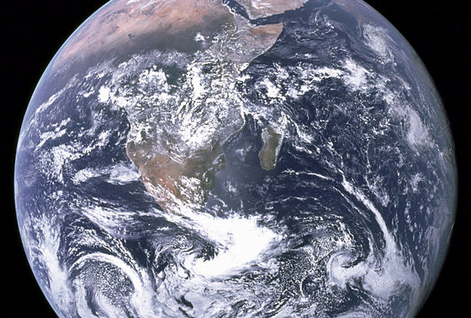Ed note. Commentary below comes via Project Syndicate, and is reprinted here with permission. Author David Griggs is Director of the Monash Sustainability Institute (MSI) in Australia. Emphasis added.
MELBOURNE – Albert Einstein once said that if he had just one hour to find a solution on which his life depended, he would spend the first 55 minutes defining the problem. Once he knew the right question to ask, he could solve the problem in less than five minutes.
Today, humanity faces such a life-threatening problem: How are we to provide adequate nutrition and a decent quality of life to a global population that is set to surpass nine billion by 2050, without irreparably damaging our planetary life-support system? To find a solution, we must start by clarifying the problem.
Humans have fundamentally altered Earth’s ecosystems. By interfering with the carbon, nitrogen, water, and phosphorus cycles, human activity changes the atmosphere, oceans, waterways, forests, and ice sheets, and diminishes biodiversity. Indeed, the effects of human behavior on the planet’s ecosystems have become so significant in the last few centuries that many scientists now believe that the planet has entered a new geological epoch, dubbed the Anthropocene.
As the environmental consequences of human activity become increasingly apparent, so does humanity’s responsibility to mitigate them. Last year, at the United Nations Earth Summit in Rio de Janeiro, world leaders agreed to create a set of universal Sustainable Development Goals, which would change the playing field for future economic policy to safeguard our life-support system. That’s easy to say. But where does one start?
For almost three decades, sustainable development has been defined as development that meets the needs of the present, without compromising future generations’ ability to meet their needs. Related policies have reflected the view that sustainable development rests on three equal pillars: the economy, society, and the environment.
But this view is no longer tenable. As the United States Global Change Research Program’s recently released draft report on climate change points out, some kinds of weather events have become more common, and more intense, in recent years. In 2012 alone, Arctic sea-ice dipped to a new low, as an area larger than the US melted; unprecedented heat waves struck Australia, and other areas; record floods hit China and Japan; and the United Kingdom had its wettest year on record. But global responses remain inadequate.
A new approach is needed. Rather than separate pillars of sustainable development, the economy must be seen as servicing society, which in turn thrives within a secure natural environment. Viewed this way, sustainable development should be redefined as “development that meets the needs of the present while safeguarding the Earth’s life-support system, on which the welfare of current and future generations depends.” After all, a healthy, thriving planet is a prerequisite for healthy, prosperous lives.
The process of identifying the Sustainable Development Goals, which are intended to enter into force in 2015, has begun in earnest. Last week, representatives from 69 countries met at the UN in New York, and an expert group meets this week. The goals must have measurable, achievable objectives that extend beyond national policy; they must inspire regional and local administrations, businesses, civil society, and individuals everywhere to change their behavior. They should create goals for humanity that are grounded in shared values – and in relevant science.
This week, my colleagues and I published a report called Sustainable Development Goals for People and Planet, which outlines what is required. We identified six universal goals for sustainable development: lives and livelihoods, food security, water sustainability, clean energy, healthy ecosystems, and good governance. The next step is to define measurable targets, such as better lives for slum dwellers or reduced deforestation. Genuine progress in any of the six target areas will require a comprehensive approach, with policies that span the economic, social, and environmental domains.
For example, eradicating poverty entails the provision of food, water, energy, and access to gainful employment. But providing energy to all will require governments to discontinue subsidies for fossil fuels and unsustainable agriculture. And achieving food security is impossible without agricultural systems and practices that not only support farmers and produce enough food to meet people’s nutritional needs, but that also preserve natural resources by, for example, preventing soil erosion and relying on more efficient nitrogen and phosphorus fertilizers.
The Millennium Development Goals, due to expire in 2015, succeeded because they marshaled international resources and funding to address a focused set of poverty-related issues. The Sustainable Development Goals must go a step further. Like Einstein’s thought experiment, many lives depend on it.
